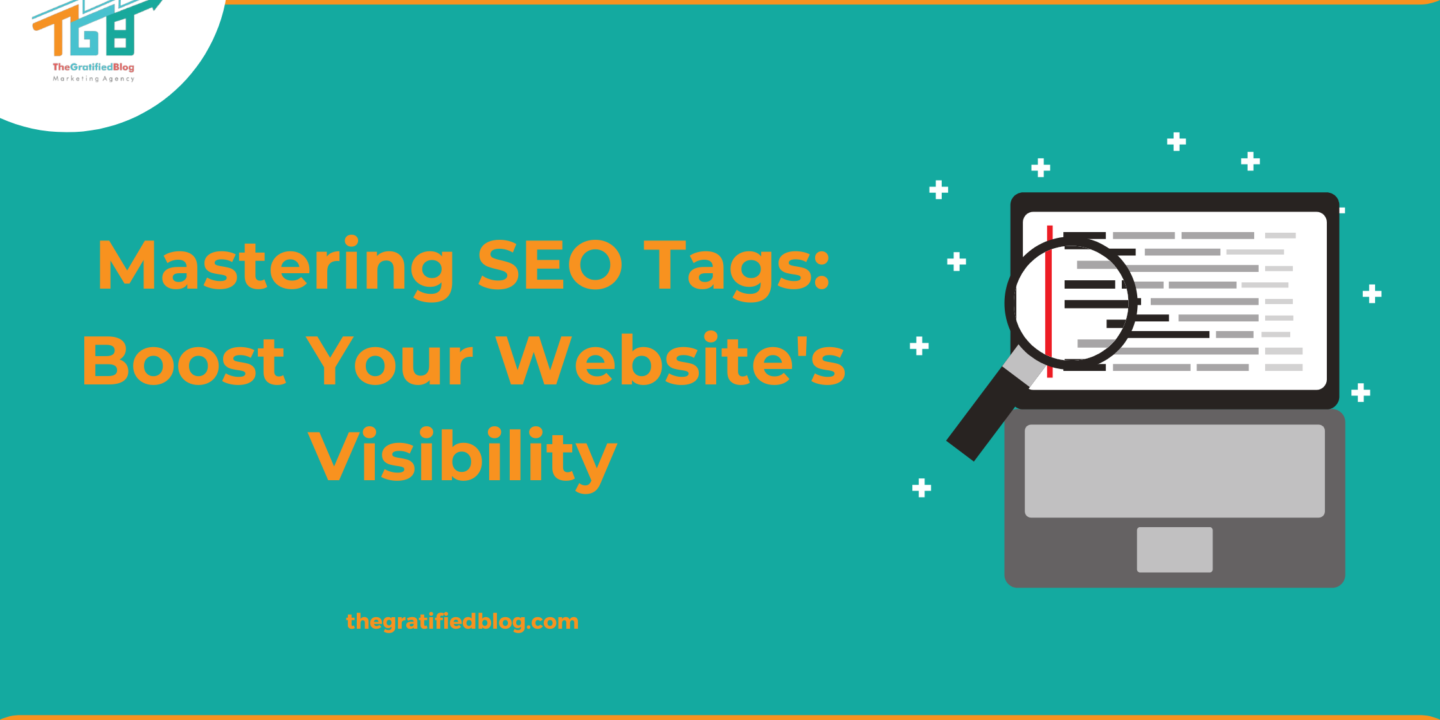
Within the expansive digital realm, where numerous websites exist and are vying for attention, SEO tags often overlook a crucial aspect of enhancing online visibility. These unassuming yet powerful elements are pivotal in how search engines perceive and rank web content. Today, we delve into “SEO tags,” shedding light on their significance and how they can be harnessed to catapult your online presence to the forefront of search engine results.
In this extensive guide, we will delve into the concept of SEO tags, their vital role in digital marketing, the various types of SEO tags, recommended tools for analyzing and optimizing them, and external online resources for staying updated with the latest trends in SEO tags. Finally, we’ll draw meaningful conclusions from exploring this crucial aspect of online visibility and search engine optimization.
Whether you’re a seasoned SEO strategist looking to refine your skills or a newcomer to digital marketing, this blog will offer you the information and tactics necessary to effectively harness the power of SEO tags. Let’s embark on this journey into the intricacies of SEO tags, where every tag Can Elevate your website to the highest position in search engine results.
So, let’s get started;
Definition Of SEO Tag
SEO tags, short for Search Engine Optimization tags, are snippets of HTML code or metadata embedded within the structure of a web page. These tags provide essential information to convey to search engines regarding the content and structure of a webpage, allowing search engine crawlers to understand, categorize, and index the page accurately.
The primary purpose of SEO tags is to enhance a website’s visibility within the pages of search engine results (SERPs) through optimization and improve its ranking for specific keywords or topics.
However, SEO tags serve as a roadmap for search engines, guiding them in interpreting and presenting the content to users searching for relevant information. By strategically using various SEO tags, website owners and digital marketers can enhance their website’s Increasing likelihood of prominently appearing in search results, thereby driving organic traffic and improving its online visibility and user engagement.
Common SEO tags include title tags, meta description tags, header tags (H1, H2, H3, etc.), image alt tags, canonical tags, meta robots tags, and others, each serving a unique purpose in search engine optimization.
Importance Of SEO Tags In Digital Marketing
The importance of SEO tags in digital marketing can’t be overstated, as they play a crucial role in shaping a website’s visibility and overall online success.
Here are five key points highlighting their significance:
Improved Search Engine Rankings
When optimized effectively, SEO tags Assist search engines in understanding the content and context of a webpage. This understanding allows search engines to rank the page more accurately for relevant keywords and topics, increasing the chances of appearing on the coveted first page of search results.
Enhanced Click-Through Rates (CTR)
Well-crafted title tags and meta descriptions Crafting an enticing title and description for your website in search results can significantly enhance click-through rates (CTR), leading to increased organic traffic.
User Experience
Header tags (H1, H2, H3, etc.) contribute to SEO and improve user experience. They help structure content, making navigating and understanding the page’s hierarchy and critical points easier for visitors.
Accessibility And Inclusivity
Image alt tags serve a dual purpose by providing alternative text for visually impaired users and describing images to search engines. That makes your content more accessible and inclusive, aligning with best practices and regulations.
Avoiding Duplicate Content Issues
Canonical and meta robot tags help prevent duplicate content problems, which can harm SEO efforts. You can maintain a clean and optimized website structure by indicating the desired version of a page and controlling how search engines index and follow links.
Types Of SEO Tags
Title Tag Optimization
A. Importance of the Title Tag
The title tag, often considered the “headline” of a web page, is a critical component of on-page SEO. It serves as the first point of contact between your content and search engine users, making it a pivotal element for attracting clicks and conveying the essence of your page.
B. Crafting a Compelling and SEO-Friendly Title Tag
- Headline Relevance: The title tag must align precisely with the content of your page. A relevant headline entices users and helps search engines understand the page’s topic, improving its chances of ranking higher.
- Keyword Placement: Strategic placement of relevant keywords in the title tag is vital. These keywords should reflect the central theme of your content and ideally appear near the beginning of the title for maximum SEO impact.
- Length and Character Limit: Title tags should be Brief and adhere to the suggested character limit, usually 50-60 characters) to display correctly in search results. That encourages readability and ensures your message is consistent.
- Branding Considerations: Incorporating your brand name, where relevant, can help with recognition and trust-building. However, it should be balanced with the main topic to maintain relevance.
C. The Impact of Title Tags on Search Engine Rankings
The significance of well-optimized title tags extends beyond user engagement; they directly influence search engine rankings. Title tags are pivotal in reliance on search engines to understand page content and user intent. A carefully crafted title tag can enhance your page’s visibility in search results, increase click-through rates, and improve your website’s search engine ranking, making it a fundamental aspect of effective SEO.
Meta Description Tag Optimization
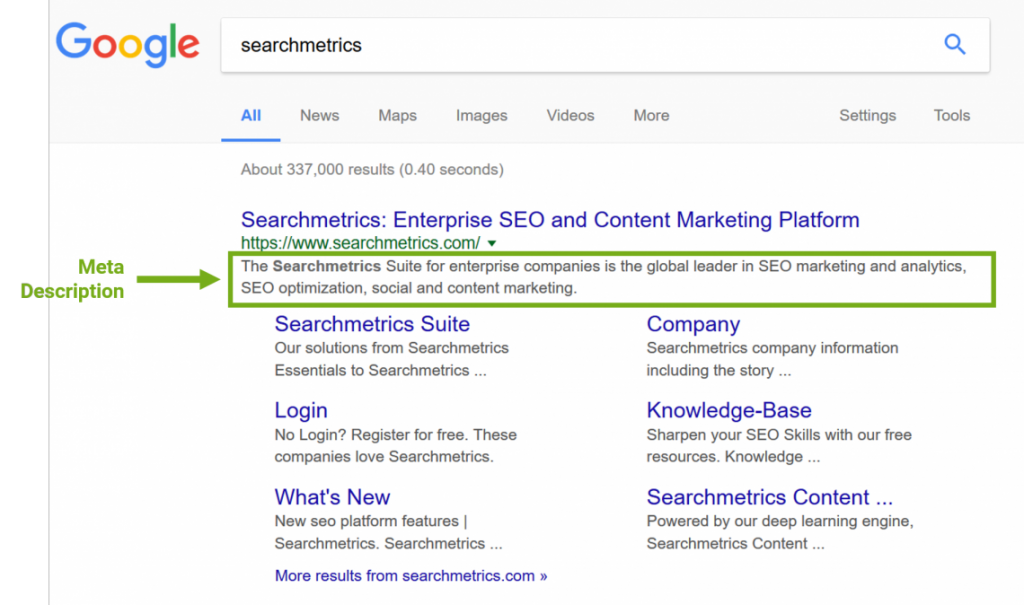
A. Significance of the Meta Description Tag
The meta description tag briefly previews a web page’s content in search engine results. Its significance lies in its capacity to provide information to searchers about the page’s relevance and entice them to click through to your site. An optimized meta description can significantly impact user engagement and search engine performance.
B. Writing an Effective Meta Description
- Clarity and Conciseness: Crafting a clear and concise meta description is paramount. It should provide a brief overview of the content while maintaining readability. Ambiguity should be avoided to ensure searchers understand what to expect.
- Keyword Inclusion: Incorporating relevant keywords into the meta description helps align it with user queries and search engine algorithms. Strategic placement of keywords can enhance the visibility of your page in search results.
- Call to Action: Including a compelling call to action (CTA) motivates users to perform the intended action, whether it’s clicking through to learn more, making a purchase, or subscribing. An effectively formulated CTA can boost both click-through rates and conversions.
- Avoiding Duplicate Descriptions: Each meta description should be unique to its respective page. Duplicate descriptions hinder user comprehension and risk lower rankings due to duplicate content issues. Ensure that each meta description provides distinctive insights into the page’s content.
C. The Role of Meta Descriptions in Click-through Rates
Meta descriptions have a direct impact on click-through rates (CTR). An engaging and informative A well-crafted meta description possesses the potential to entice users to click on your link within search results. You are driving organic traffic to your website. By effectively optimizing meta descriptions, you can elevate your CTR, improve the user experience, and ultimately enhance your website’s search engine performance.
Header Tags (H1, H2, H3) For SEO
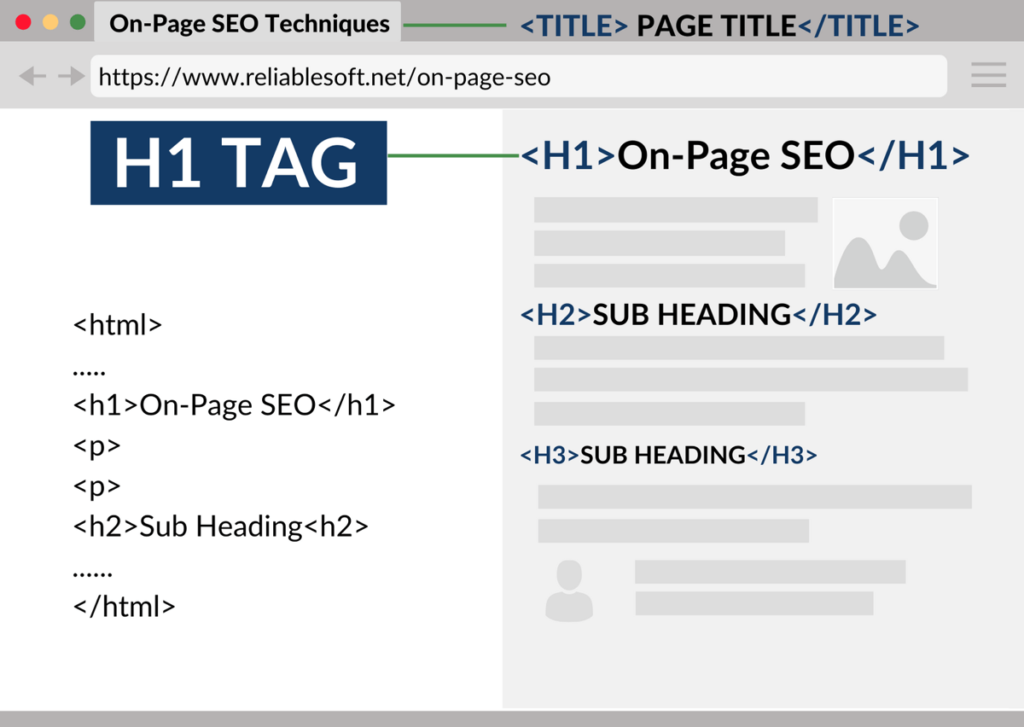
A. Understanding Header Tags in SEO
Header tags, denoted as H1, H2, H3, and so forth, are HTML elements used to structure and organize content on a web page. In SEO, these tags serve a dual purpose: they provide a hierarchical structure to the content and convey its importance to search engines.
B. Importance of Proper Header Tag Structure
- H1: The Main Heading: The H1 tag represents a page’s primary headline or title and should succinctly encapsulate the page’s main topic. Search engines rely on the H1 to understand the overarching theme of the content.
- H2: Subheadings and Sections: H2 tags divide content into logical sections or subsections. They provide clarity and organization to the content, helping users and search engines navigate the page’s structure.
- H3: Subsections and Hierarchical Structure: H3 tags further subdivide content under H2 headings, creating a hierarchical structure. This hierarchy aids in comprehending the relationships between different sections and topics, enhancing the overall user experience.
C. How Header Tags Improve User Experience and SEO
Properly structured header tags benefit SEO and enhance the user experience. They make content more readable and scannable, allowing visitors to quickly identify critical points and navigate to sections of interest. From an SEO perspective, well-organized header tags Communicate the significance and organization of your content to search engines, potentially leading to better rankings and improved visibility in search results.
Image Alt Tags For SEO
A. Introduction to Image Alt Tags
Image Alt tags, short for “alternative “Alt text,” refer to HTML attributes utilized for describing the content of an image on a webpage. They are crucial in web accessibility and search engine optimization (SEO).
B. Optimizing Image Alt Tags for SEO
- Descriptive and Relevant Alt Text: Alt tags should provide a clear and concise description of the image, conveying its purpose and context within the content. This descriptive text helps search engines understand the image’s relevance to the page.
- Keyword Usage in Alt Tags: Incorporating relevant keywords into alt tags can enhance the SEO value of the image. However, ensuring that the keywords are genuinely relevant to the image and the surrounding content is essential.
- Avoiding Keyword Stuffing: While keywords are valuable, overloading alt tags with excessive keywords (keyword stuffing) is discouraged. Alt tags should prioritize clarity and accuracy, avoiding artificial or excessive keyword usage.
- Accessibility Benefits of Alt Tags: Alt tags play a critical role in web accessibility. They provide information to users with visual impairments, allowing screen readers and assistive technologies to describe images. Prioritizing accessibility broadens your audience and aligns with ethical and legal considerations.
C. The Impact of Image Alt Tags on Search Engine Rankings
Image alt tags contribute to the overall SEO health of a webpage. They facilitate the indexing and comprehension of content by search engine images, potentially improving rankings in image search results. Additionally, alt tags demonstrate a commitment to providing valuable content to all users, positively influencing user experience and search engine visibility.
Canonical Tags In SEO
A. What Are Canonical Tags?
Canonical tags, or rel=”canonical” tags, are HTML elements used to specify a webpage’s preferred or canonical version when multiple versions with similar content exist. They inform search engines which version should be indexed and displayed in search results.
B. The Purpose and Use Cases of Canonical Tags
Canonical tags serve the critical purpose of resolving issues related to duplicate content and URL variations. They are commonly used in the following scenarios:
- Content Duplication: When the same or substantially similar content appears on multiple URLs, canonical tags help consolidate authority and prevent SEO dilution.
- Parameterized URLs: Canonical tags can set the canonical version of pages with dynamic parameters, ensuring that search engines index the preferred URL.
- Cross-Domain Canonicalization: Canonical tags can specify the original or preferred source when content is syndicated or shared across multiple domains.
C. Canonical Tags and SEO Best Practices
- Regularly review your website to pinpoint and address duplicate content issues, and implement canonical tags where necessary.
- Ensure that canonical tags are correctly placed in the HTML head section of web pages.
- Use canonicalization to optimize for user-friendly URLs while maintaining SEO integrity.
- Monitor canonical tags to ensure they accurately reflect changes in content and site structure.
Meta Robots Tags In SEO
A. Introduction to Meta Robots Tags
Meta robot tags, also known as meta tags or robot directives, are HTML elements that instruct search engine crawlers on how to engage with a webpage’s content. These tags are pivotal in controlling The process by which search engines catalog and present web pages in search results.
B. Types of Meta Robots Tags (7 tags mentioned)
- Index/Noindex Tags: The “index” tag allows search engines to include a page in their index, while “noindex” instructs them not to index the page, keeping it out of search results.
- Follow/Nofollow Tags: “Follow” permits search engines to follow and crawl links on a page, while “nofollow” tells them not to follow or pass link equity through those links.
- Archive/Noarchive Tags: The “archive” tag allows search engines to store a cached page version, while “Noarchive” prevents caching.
- Snippet/Nosnippet Tags: “Snippet” allows search engines to display a snippet of the page’s content in search results, while “nosnippet” prevents the display of a snippet.
C. Leveraging Meta Robots Tags for SEO Strategy
- Use “noindex” tags for pages that should not appear in search results, including thank-you pages, login pages, or duplicated content.
- Employ “nofollow” tags on external or untrusted links to prevent the flow of link equity to unrelated websites.
- “Noarchive” can help protect sensitive content, while “snippet” and “nosnippet” tags control how your content is presented in search results.
- “Noimageindex” and “unavailable after” tags provide specialized control for image indexing and content expiration.
Meta Viewport
The “meta viewport” tag is a meta tag in HTML that primarily deals with the responsive viewport meta tag that influences the design and arrangement of a web page on mobile devices, providing web developers the ability to manage the display and scale across different screen sizes and orientations. This is especially relevant for mobile devices such as smartphones and tablets.
The meta viewport tag typically includes attributes such as “width,” “initial scale,” and “user-scalable.”
Here’s a brief overview of these attributes:
- Width: Specifies the width of the viewport, usually set to “device-width” to ensure that the webpage adapts to the screen width of the user’s device.
- Initial Scale: Sets the initial zoom level when the webpage is loaded. A value of “1.0” means no zoom, while values less than “1.0” zoom out, and values greater than “1.0” zoom in.
- User-Scalable: Determines whether users can zoom in or out on the webpage. Setting it to “yes” allows users to zoom, while “no” turns off zooming.
Properly configuring the meta viewport tag ensures that web content appears legible, well-proportioned, and user-friendly across various screen sizes and devices, contributing to an improved user experience and SEO performance.
Tools For SEO Tag Analysis And Optimization
Yoast SEO (Plugin For WordPress)

Yoast SEO is a widely used WordPress plugin that offers robust on-page SEO analysis and optimization—optimizing features, which include the optimization of title tags and meta descriptions, header tag management, and content readability checks. It offers instant feedback and suggestions to enhance your SEO tags, making it an invaluable tool for WordPress users.
Screaming Frog SEO Spider

Screaming Frog is a desktop-based SEO tool that can crawl websites and analyze various SEO elements, including title tags, meta descriptions, header tags, and canonical tags. It helps identify issues like missing or duplicate tags, making it a go-to choice for in-depth SEO tag analysis.
SEMrush

SEMrush is an all-in-one SEO and digital marketing platform with features for SEO tag analysis and optimization. It offers insights into your website’s SEO health, including meta and header tags. Additionally, SEMrush offers analysis of competitors and conducts keyword research, aiding your overall SEO strategy.
External Websites And Blogs For Keeping Up With SEO Tag Trends
Moz

Moz blog is a reputable source for staying updated on SEO trends and best practices, including SEO tag optimization. They regularly publish informative articles, guides, and case studies that cover various aspects of on-page SEO, including tags.
Search Engine Land

Search Engine Land is a well-respected industry publication covering the latest search engine optimization developments. Their articles often delve into topics related to SEO tags, providing valuable insights and strategies.
These tools and websites can be valuable resources for optimizing your SEO tags and staying current in the continuously changing landscape of search engine optimization.
Conclusion
With a comprehensive understanding of SEO tags and their effective utilization, there’s no need to delay. It’s time to incorporate these tags into your SEO strategy and witness their impact on your website’s performance.
If you have any doubts regarding SEO tags, please comment in the comment section. We will be happy to answer your questions.
Thanks for reading 🙂




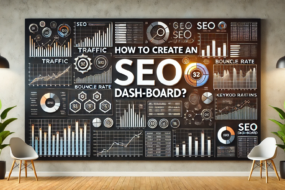

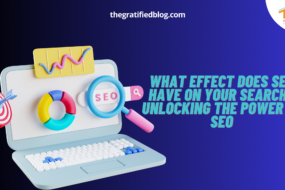
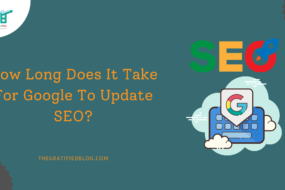
No Comments